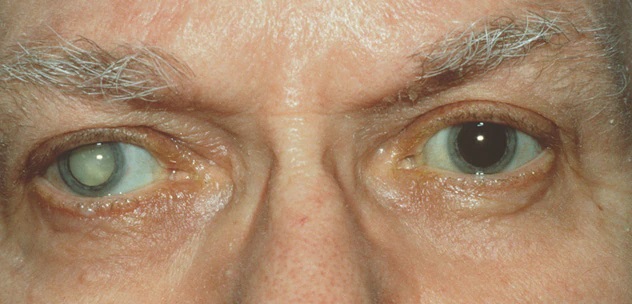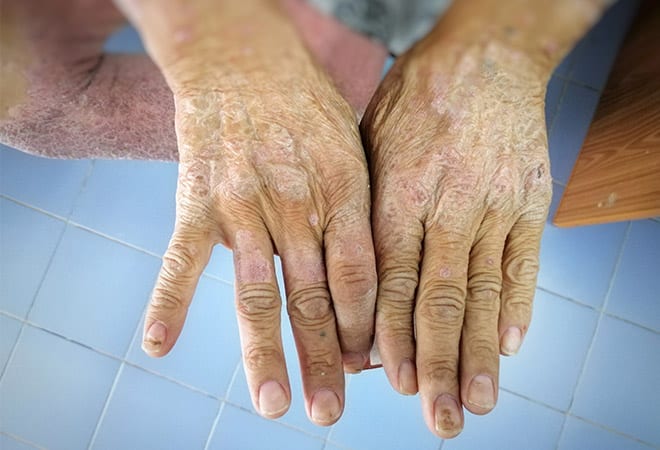
What You Need to Know About Glaucoma and Blindness
Glaucoma is a group of eye diseases that damage the optic nerve, often due to increased pressure within the eye, and is a leading cause of irreversible blindness worldwide. According to the World Health Organization, glaucoma affects over 60 million people globally and is the second leading cause of blindness after cataracts. In the United States, approximately 3 million people have glaucoma, with many unaware of their condition until significant vision loss occurs, as noted by the Glaucoma Research Foundation.
Understanding Glaucoma
Glaucoma is characterized by progressive damage to the optic nerve, which transmits visual information from the eye to the brain. This damage is often associated with elevated intraocular pressure (IOP), caused by a buildup of aqueous humor, the fluid that nourishes the eye. However, glaucoma can also occur with normal IOP, highlighting the complexity of the disease. If left untreated, glaucoma can lead to permanent vision loss or blindness, making early detection and management critical.
Conjunctivitis: Symptoms, Causes, and Cure
Glaucoma is often called the “silent thief of sight” because it typically progresses without noticeable symptoms until significant damage has occurred. Understanding the types, causes, and risk factors is essential for early intervention and preventing vision loss.
Types of Glaucoma
There are several types of glaucoma, each with distinct characteristics and implications for vision. The most common types include:
- Primary Open-Angle Glaucoma (POAG): The most prevalent form, POAG accounts for about 90% of cases in the U.S. It occurs when the eye’s drainage canals become clogged over time, increasing IOP and damaging the optic nerve. Symptoms are gradual and often unnoticed until peripheral vision is lost.
- Angle-Closure Glaucoma: This less common but more severe type occurs when the iris blocks the drainage angle, causing a sudden increase in IOP. It can be acute (sudden onset with severe symptoms) or chronic (gradual). Acute angle-closure glaucoma is a medical emergency
- Normal-Tension Glaucoma: In this type, optic nerve damage occurs despite normal IOP, possibly due to poor blood flow or other factors. It is more common in certain populations, such as those of Asian descent.
- Secondary Glaucoma: This results from an underlying condition, such as eye injury, inflammation, or medications like corticosteroids. It can also be associated with diseases like diabetes or uveitis.
- Congenital Glaucoma: Present at birth, this rare form affects infants due to abnormal development of the eye’s drainage system. Symptoms include cloudy eyes, excessive tearing, and light sensitivity.
What Causes Cataracts and How to Prevent Them
Causes and Risk Factors
The exact cause of glaucoma is not fully understood, but it involves a combination of factors that contribute to optic nerve damage. Key causes and risk factors include:
- Elevated Intraocular Pressure (IOP): Increased pressure from fluid buildup is the primary risk factor for optic nerve damage. “High pressure inside the eye can damage the optic nerve, which sends images formed on the retina to the brain.”
- Age: The risk of glaucoma increases after age 60, though certain types, like POAG, can affect younger adults.
- Family History: A genetic predisposition significantly increases risk. Individuals with a first-degree relative (parent or sibling) with glaucoma are up to 10 times more likely to develop it.
- Ethnicity: African Americans, Hispanics, and Asians have a higher risk of specific types of glaucoma. For example, African Americans are more prone to POAG, while Asians are at greater risk for angle-closure glaucoma.
- Medical Conditions: Diabetes, hypertension, and heart disease can impair blood flow to the optic nerve, increasing glaucoma risk. Myopia (nearsightedness) and hyperopia (farsightedness) are also associated with specific types.
- Eye-Related Factors: Previous eye injuries, surgeries, or chronic inflammation (uveitis) can contribute to secondary glaucoma.
- Corticosteroid Use: Long-term use of steroids, particularly eye drops, can elevate IOP and lead to glaucoma.
Symptoms of Glaucoma
Glaucoma symptoms vary by type and stage. Early detection is challenging because many forms, particularly POAG, are asymptomatic until significant vision loss occurs. Common symptoms include:
- Primary Open-Angle Glaucoma:
- Gradual loss of peripheral (side) vision, often in both eyes
- Tunnel vision in advanced stages
- No pain or noticeable symptoms early on.
- Acute Angle-Closure Glaucoma:
- Severe eye pain
- Blurred vision
- Halos around lights
- Nausea and vomiting
- Sudden vision loss.
- Chronic Angle-Closure Glaucoma:
- Gradual vision loss, similar to POAG
- Mild eye discomfort or headaches.
- Congenital Glaucoma:
- Cloudy or enlarged corneas
- Excessive tearing
- Sensitivity to light.
Because symptoms often appear late, regular eye exams are critical for early detection, especially for those at higher risk.
Understanding Gastrointestinal Discomfort and Treatments that Work
Glaucoma and Blindness
Glaucoma is a leading cause of irreversible blindness, primarily because optic nerve damage cannot be reversed. Vision loss typically begins with peripheral vision, progressing to tunnel vision and, in severe cases, total blindness if untreated. According to the World Health Organization, glaucoma accounts for 12% of global blindness. Early detection and treatment can significantly slow or halt progression, preserving vision.
The risk of blindness is higher in:
- Untreated or undiagnosed cases
- Individuals with advanced disease at diagnosis
- Those with poor adherence to treatment.
Regular screening and timely intervention are crucial to prevent vision loss.
“Early detection through regular and complete eye exams is the key to protecting your vision from damage caused by glaucoma,” emphasizes the American Academy of Ophthalmology.
Diagnosis of Glaucoma
Diagnosing glaucoma involves a comprehensive eye exam to assess optic nerve health, IOP, and visual function. Key diagnostic tests include:
- Tonometry: Measures IOP using a device like a tonometer. Normal IOP ranges from 10–21 mmHg, but glaucoma can occur at any pressure.
- Ophthalmoscopy: Examines the optic nerve for signs of damage, such as cupping or pallor.
- Visual Field Test: Assesses peripheral vision to detect early loss, a hallmark of glaucoma.
- Gonioscopy: Evaluates the drainage angle to distinguish between open-angle and angle-closure glaucoma.
- Optical Coherence Tomography (OCT): Provides detailed images of the optic nerve and retina to detect thinning or damage.
Zollinger-Ellison Syndrome: Rare Digestive Disorder – What You Need to Know
Regular eye exams, at least every 1–2 years, are recommended, especially for those over 40 or with risk factors.
Treatment Options for Glaucoma
While glaucoma damage is irreversible, treatments can slow or prevent further vision loss by lowering IOP or protecting the optic nerve. Treatment varies by type and severity and may include:
- Medications:
- Eye Drops: Eye drops used in managing glaucoma, e.g. Prostaglandin analogs, beta-blockers, alpha agonists, and carbonic anhydrase inhibitors, reduce IOP by increasing fluid outflow or decreasing production.
- Oral Medications: Used when eye drops are insufficient, typically carbonic anhydrase inhibitors.
- Laser Therapy:
- Selective Laser Trabeculoplasty (SLT): Used for open-angle glaucoma to improve drainage.
- Laser Peripheral Iridotomy (LPI): Creates a small hole in the iris to improve fluid flow in angle-closure glaucoma.
- Surgery:
- Trabeculectomy: Creates a new drainage pathway to lower IOP.
- Glaucoma Drainage Devices: Implants that help drain fluid, used in complex cases.
- Minimally Invasive Glaucoma Surgery (MIGS): Less invasive procedures with quicker recovery, suitable for early to moderate glaucoma.
- Congenital Glaucoma Treatment: Surgery is often required in infants to correct drainage issues.
Adherence to treatment is critical, as missed doses or inconsistent use can lead to progression and vision loss.
Prevention and Risk Reduction
While glaucoma cannot always be prevented, certain measures can reduce risk or slow progression:
- Regular Eye Exams: Early detection through routine screenings is vital, especially for those over 40 or with risk factors.
- Protect Your Eyes: Wear protective eyewear during sports or hazardous activities to prevent injuries that could lead to secondary glaucoma.
- Manage Health Conditions: Controlling diabetes, hypertension, and other conditions can reduce glaucoma risk.
- Avoid Smoking: Smoking may increase IOP and optic nerve damage risk.
- Healthy Lifestyle: A balanced diet rich in antioxidants (e.g., leafy greens, fruits) and regular exercise may support eye health.
Autoimmune Disorders: Recognizing the Signs, Diagnosis, and Treatment
Living with Glaucoma: Practical Tips
Managing glaucoma requires ongoing care and lifestyle adjustments to preserve vision and quality of life:
- Follow Treatment Plans: Use medications as prescribed and attend follow-up appointments to monitor IOP and optic nerve health.
- Use Visual Aids: Magnifiers, large-print materials, or assistive devices can help with daily tasks if vision loss occurs.
- Join Support Groups: Organizations like the Glaucoma Research Foundation offer resources and support communities for patients and families.
- Stay Informed: Learn about glaucoma from reputable sources to understand your condition and treatment options.
Yeast Infections (Candidiasis): Causes, Symptoms, and Treatment
Rheumatoid Arthritis: Causes, Symptoms, Prevention, and Treatment







